Jean-Michel Othoniel and Johan Creten think big for their new Paris studio
Johan Creten's three-ton bronze bat, De Vleermuis, is being displayed at Petit Palais during FIAC art fair
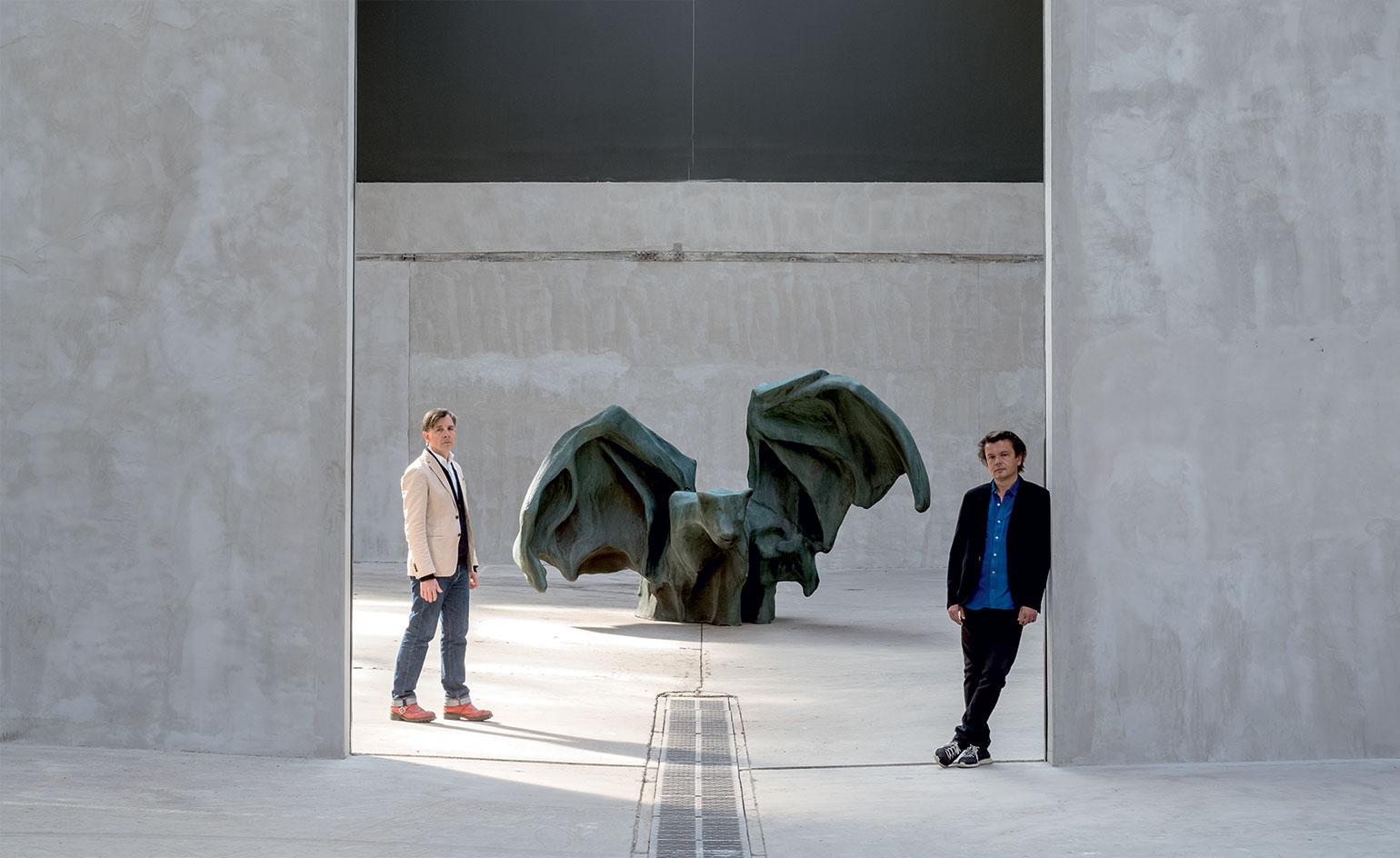
A couple of decades ago, this writer’s handbag ‘disappeared’ at the edge of Montreuil, a gritty eastern suburb of Paris once best known for its marché des voleurs, or thieves’ market. In recent years, however, artists have been flocking to Montreuil, drawn by its proximity to the capital and affordable real estate. It’s not yet Brooklyn, but change is in the air.
The latest big name to arrive is Jean-Michel Othoniel, who splashed onto the scene in 2000 with his colourfully beaded Palais Royal-Musée du Louvre metro entrance. He has since become one of the country’s foremost contemporary artists and a member of the Académie des Beaux-Arts, his poetic glass sculptures appearing everywhere from the Château de Versailles gardens to the National Museum of Qatar.
This autumn, Othoniel is moving into a vast space he will share with his life partner, the Belgian sculptor Johan Creten, who built his reputation using ceramics as a material for contemporary art when it was still considered passé. (Creten is showing a three-ton bronze bat, De Vleermuis, in front of the Petit Palais during the FIAC art fair.) Until now, Othoniel had three different studios in Paris, while Creten earned the nickname ‘clay gypsy’ after years of working in temporary studios around the world. Both were finding it increasingly problematic to store their monumental artworks.
Hoping to locate all their activity in one place, they searched for years in the Paris suburbs. And then, three years ago, Othoniel stumbled upon a space for sale, nearly 4,000 sq m and only one metro station beyond the Périphérique. Built as a metal workshop in the early 20th century, it was in excellent condition, with Eiffel-era architecture of metal beams and glass ceilings. ‘It’s a beautiful space, almost a postcard Paris atelier,’ says the soft-spoken Othoniel. ‘It’s very rare to find a place like this that hasn’t been destroyed by the years.’
The pair call their new studio La Solfatara, after a volcanic crater near Naples that has inspired artists for generations. The name references the re used for their sculptures in glass, ceramic and bronze, as well as Othoniel’s earliest works, which were made of sulphur from yellow stone. It will be a place ‘bubbling with energy, eruption, fusion – a dynamic place for collaboration,’ he says. Othoniel believes the new studio will encourage each of them to think about their work in a different way. Though La Solfatara will receive visits by appointment only, the duo want it to feel like a community, welcoming art-world figures and artists of all types for exchange and experimentation.
La Solfatara also offers them another place to exhibit their works, especially the largest pieces that are complicated to move. During FIAC week, they will show a mix of their recent creations to collectors and friends, such as Othoniel’s Agora steel brick igloo and Creten’s gigantic vulture, De Gier.
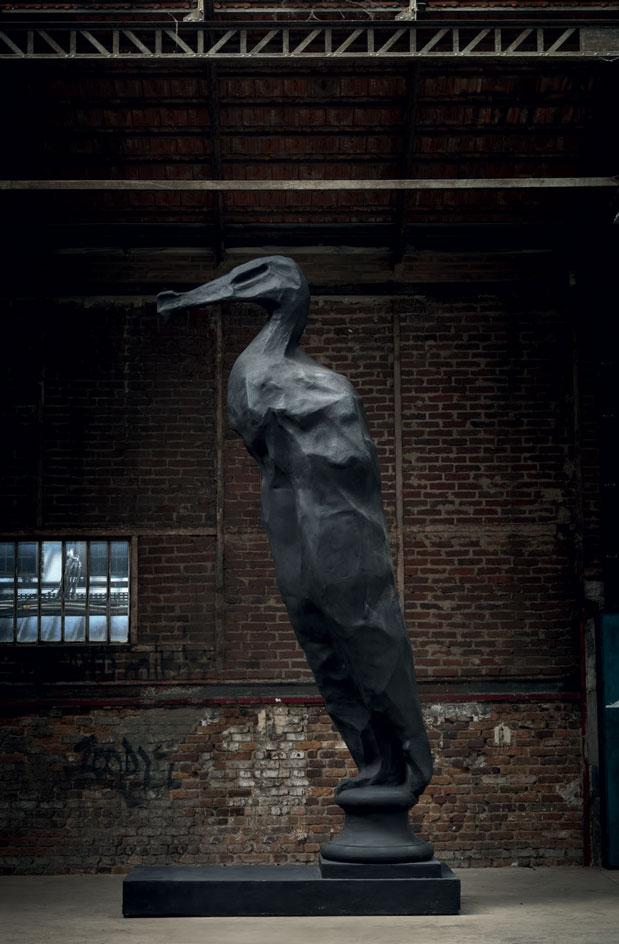
De Gier (The Vulture), 2015-2016, by Johan Creten
La Solfatara consists of two buildings side by side. The larger of the two, the Great Hall, covers roughly the length of a football eld. The smaller, the High Hall, is about three-quarters as long and nearly 15m-tall at its highest point. Each features a huge open area, too spacious to be heated, yet perfect for creating and installing large artworks (or throwing parties).
Wallpaper* Newsletter
Receive our daily digest of inspiration, escapism and design stories from around the world direct to your inbox.
Determined to have a major say in the renovation, the artists called upon French architect Dominique Lyon, a friend, to help design the project. They agreed to leave the buildings’ bones basically untouched, while adding a few strong details. ‘We wanted to keep the spirit of the place,’ says Othoniel. ‘We worked with it in a utilitarian way, to make it practical for the artworks.’
One striking new addition to the High Hall is the entrance, a folding glass door 7m high and 5m wide. To one side, a bookstore is planned for a later stage. (Othoniel and Creten have both produced a number of books, considering them artworks in their own right, and this autumn Phaidon will release Othoniel’s first monograph in ten years.) Across from the store, a café will eventually occupy a space where an auto shop once stood, with a visiting artists’ residence above.
In the open space of the High Hall, the artists have placed a low platform on the floor as a theatrical way to exhibit installations. Othoniel covered the upper parts of the walls with charred wood, a Japanese process known as shou sugi ban, which he fell in love with years ago after seeing it on the island of Naoshima. ‘Burnt wood with its subtle odour fits in well with the idea of La Solfatara,’ he notes. Stuck to the back of the High Hall is a delightfully random structure, an actual three- storey townhouse peeking into the space from one corner. Built in 1869 to manufacture alcohol for fuel, it will now house the staff offices, as well as Othoniel’s personal office, which comes with a view of the studio.
Next to the old house, the artists have restored a 1941 ‘glass house’ by architect Maurice Cammas, installing an interior façade with large windows. Its three floors will contain a metal shop, photography studio, spaces for collaborators, a conference room and archives. Creten says the importance of archives is ‘something we learned from American artists, many in their fifties like us, who start thinking about how to organise their work for art historians or young artists to study’. An open-air terrace overlooks Montreuil’s mishmash of industrial buildings and residences; Othoniel plans to create a major sculpture there, as a landmark for La Solfatara.
No glass will be blown at the studio (Othoniel relies on specialists in Switzerland, Italy and India), but he and his team will use the space to string together large glass orbs or metal beads into fountains and oversized necklaces. They will stack and weld bricks of glass or polished steel into waves and walls, and run computer simulations to test how these large sculptures will stand up over time. Othoniel will continue to work in other media here, too, such as his ink and gold leaf paintings currently on display at the Louvre Museum.
La Solfatara’s Great Hall is where Creten has set up his new studio, 500 sq m at the rear of the building. Settling down in one place will be an adjustment after his nomadic lifestyle, but he is taking inspiration from Auguste Rodin’s former atelier in the southwestern suburb of Meudon, a hive of activity where close to 50 people once worked. Tourists still travel to Meudon to see Rodin’s studio – perhaps a century from now, La Solfatara will draw them east to Montreuil. §
As originally featured in the November 2019 issue of Wallpaper* (W*248) – on newsstands now
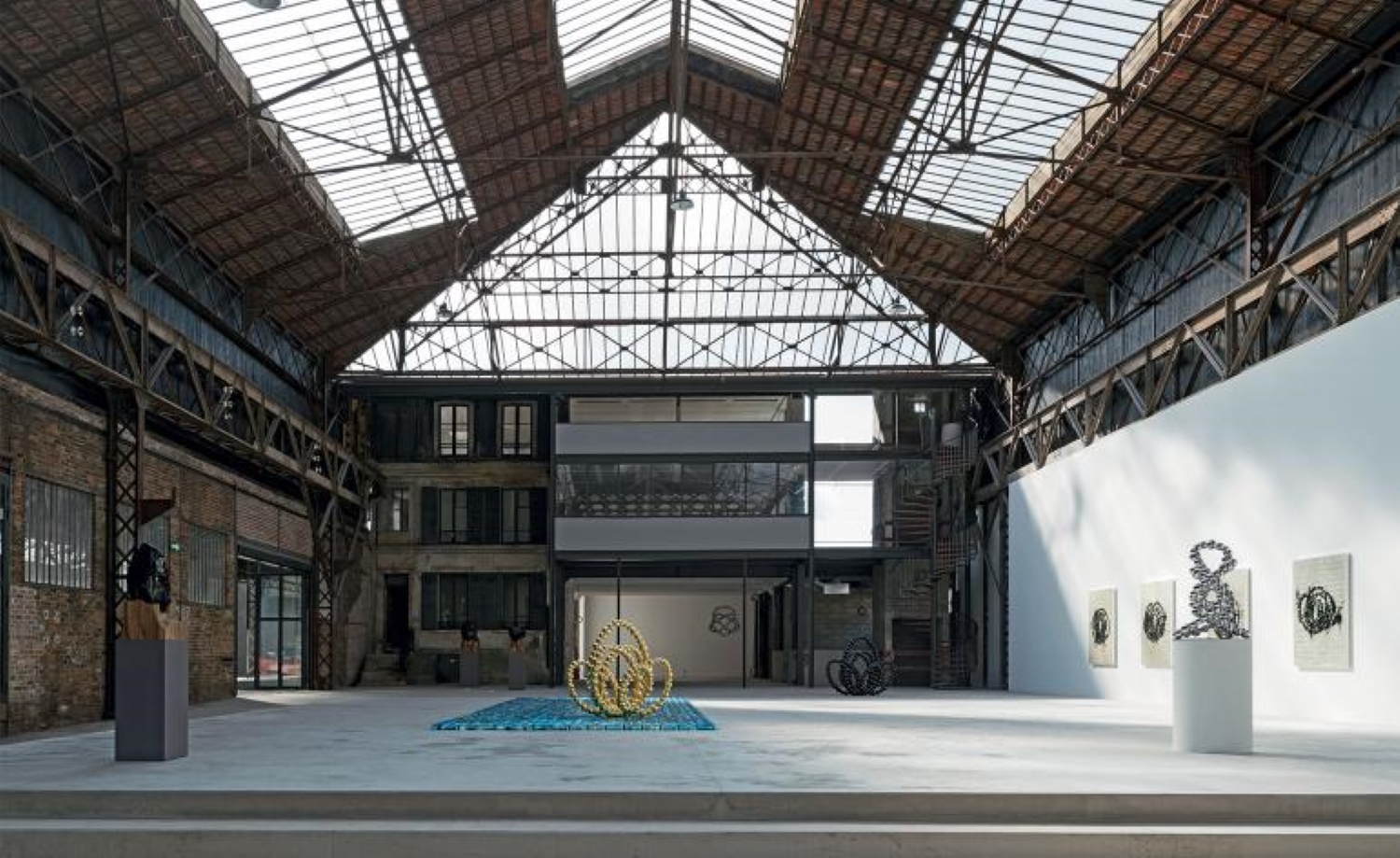
In the High Hall, from left, Othoniel’s Invisibility Face sculptures, 2015; Gold Lotus and Rivère Bleue, 2019; Black Lotus, 2018; Noeud Sauvage, 2018; and Rose Du Louve Paintings, 2019
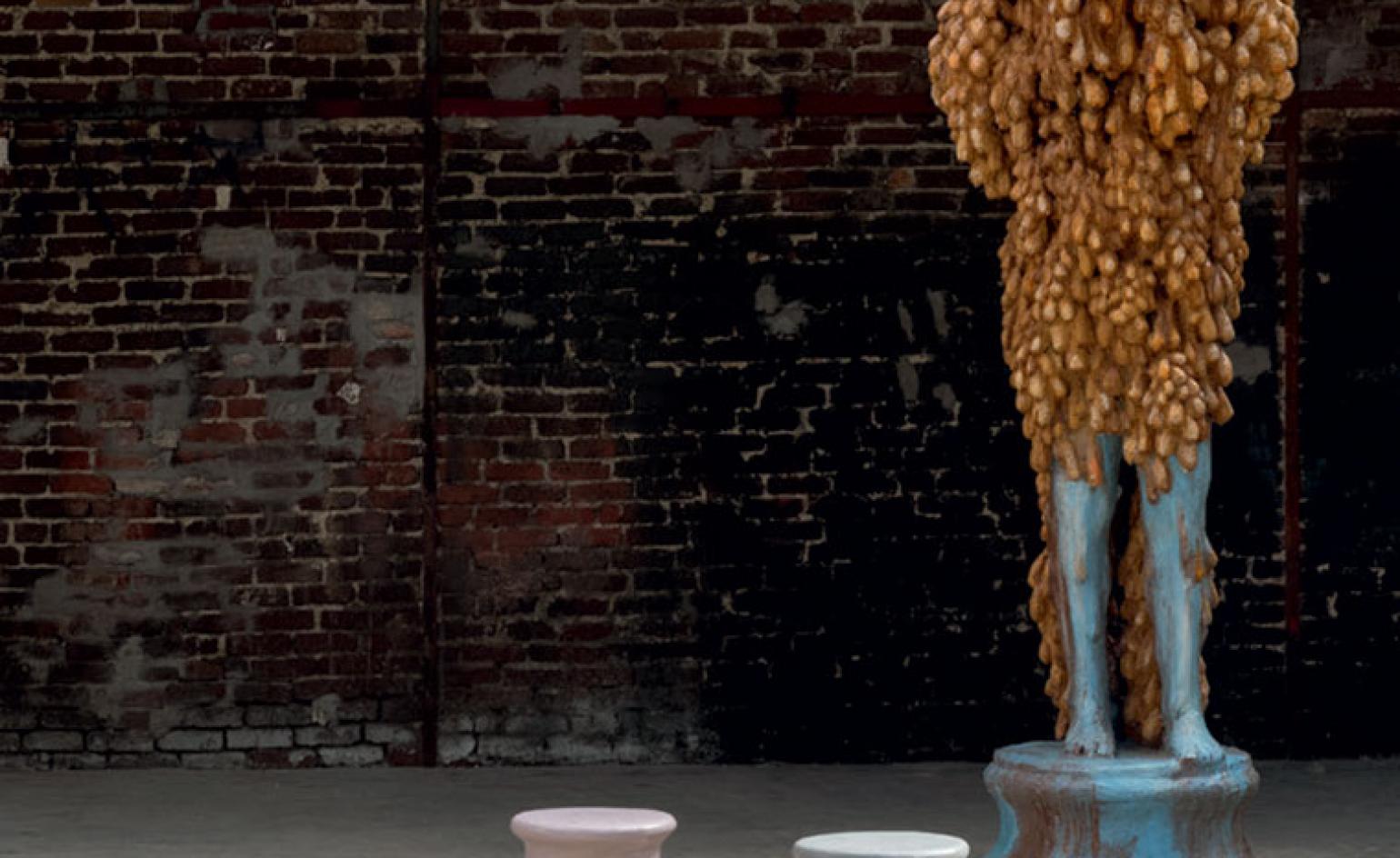
Why Does Strange Fruit Always Look So Sweet?, 1998-2015; and a series of Points D’Observations, 2016-1018, all by Johan Creten
INFORMATION
-
 Tour the best contemporary tea houses around the world
Tour the best contemporary tea houses around the worldCelebrate the world’s most unique tea houses, from Melbourne to Stockholm, with a new book by Wallpaper’s Léa Teuscher
By Léa Teuscher
-
 ‘Humour is foundational’: artist Ella Kruglyanskaya on painting as a ‘highly questionable’ pursuit
‘Humour is foundational’: artist Ella Kruglyanskaya on painting as a ‘highly questionable’ pursuitElla Kruglyanskaya’s exhibition, ‘Shadows’ at Thomas Dane Gallery, is the first in a series of three this year, with openings in Basel and New York to follow
By Hannah Silver
-
 Australian bathhouse ‘About Time’ bridges softness and brutalism
Australian bathhouse ‘About Time’ bridges softness and brutalism‘About Time’, an Australian bathhouse designed by Goss Studio, balances brutalist architecture and the softness of natural patina in a Japanese-inspired wellness hub
By Ellie Stathaki
-
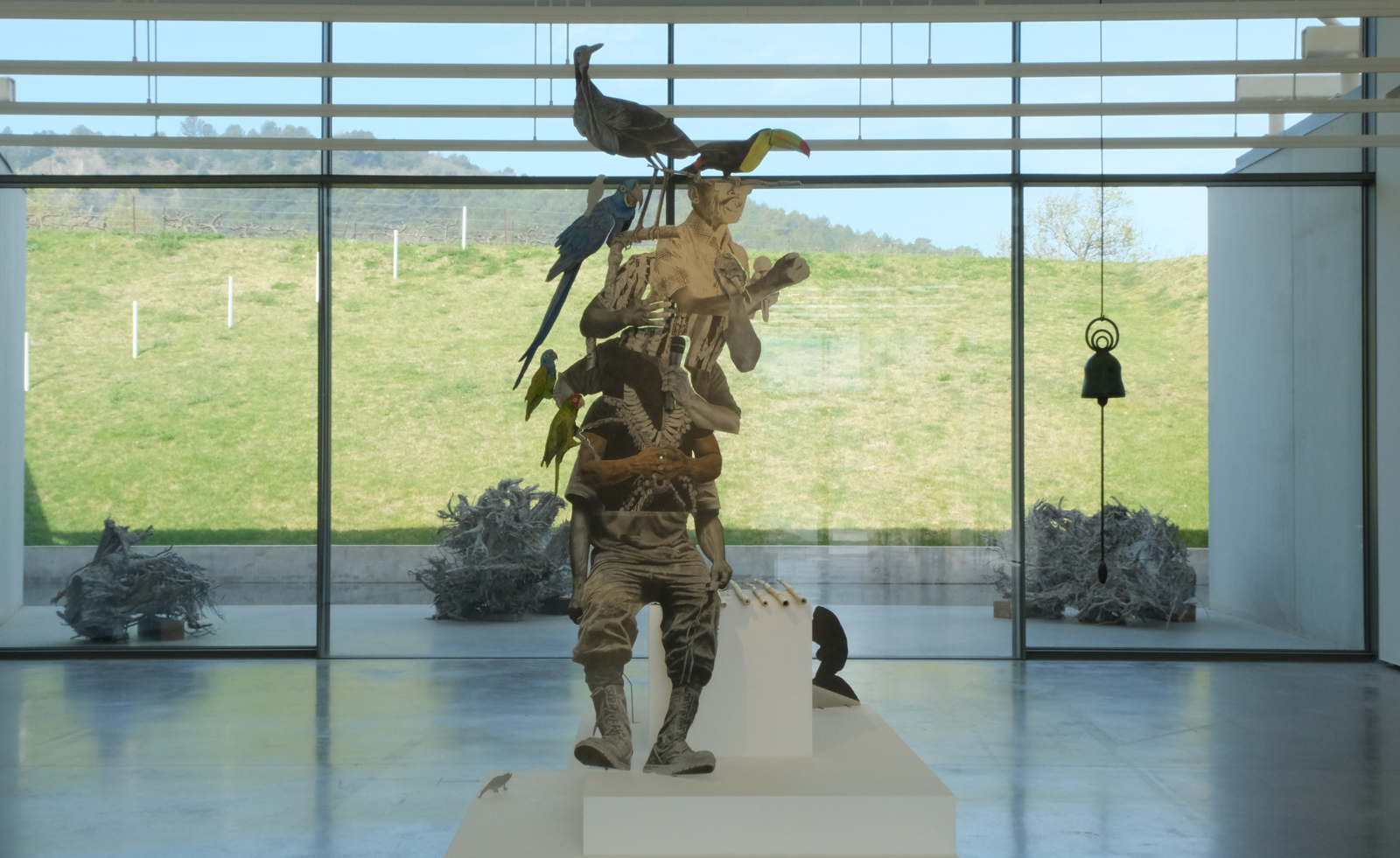 Contemporary artist collective Poush takes over Château La Coste
Contemporary artist collective Poush takes over Château La CosteMembers of Poush have created 160 works, set in and around the grounds of Château La Coste – the art, architecture and wine estate in Provence
By Amy Serafin
-
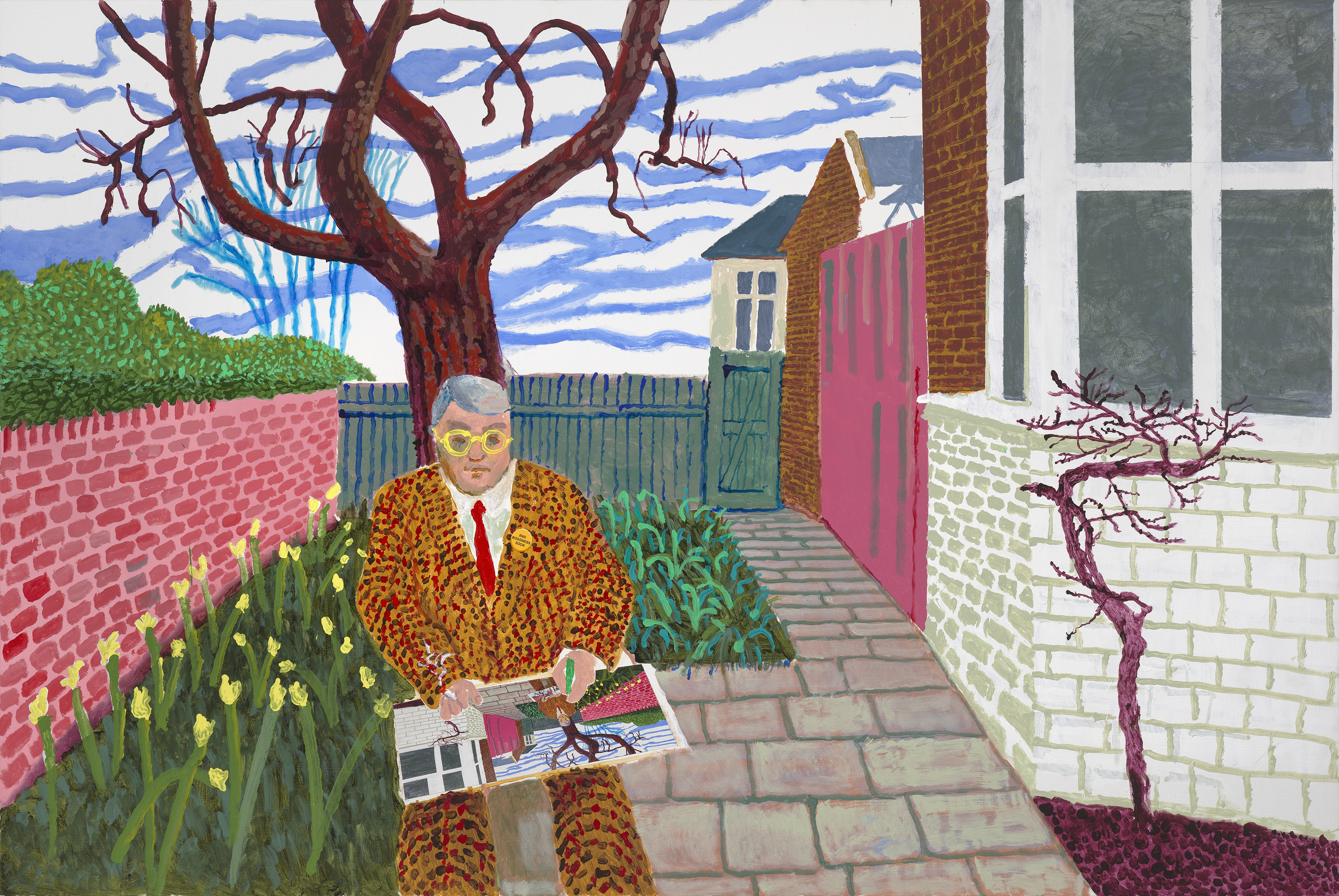 ‘David Hockney 25’: inside the artist’s blockbuster Paris show
‘David Hockney 25’: inside the artist’s blockbuster Paris show‘David Hockney 25’ has opened at Fondation Louis Vuitton in Paris. Wallpaper’s Hannah Silver took a tour of the colossal, colourful show
By Hannah Silver
-
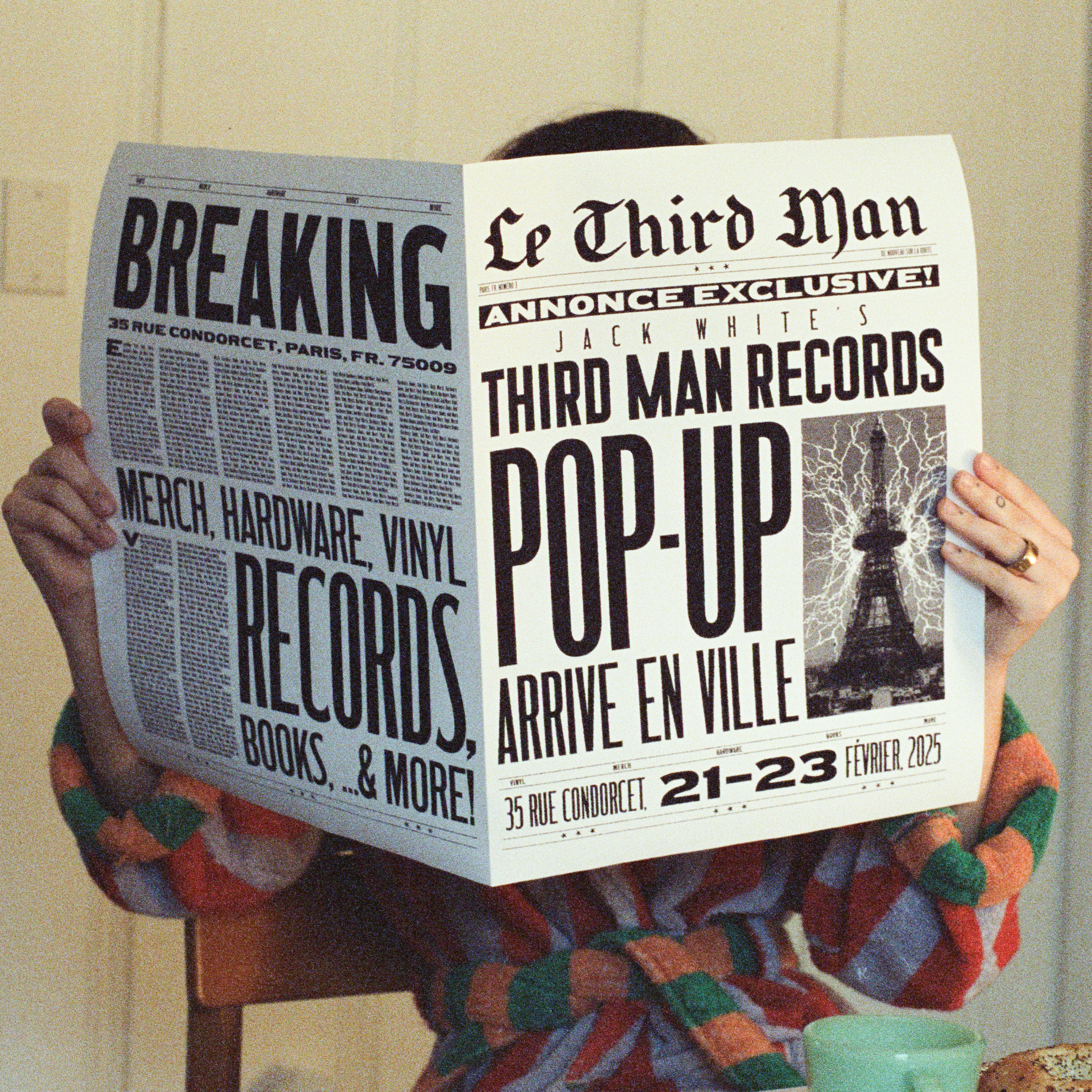 Jack White's Third Man Records opens a Paris pop-up
Jack White's Third Man Records opens a Paris pop-upJack White's immaculately-branded record store will set up shop in the 9th arrondissement this weekend
By Charlotte Gunn
-
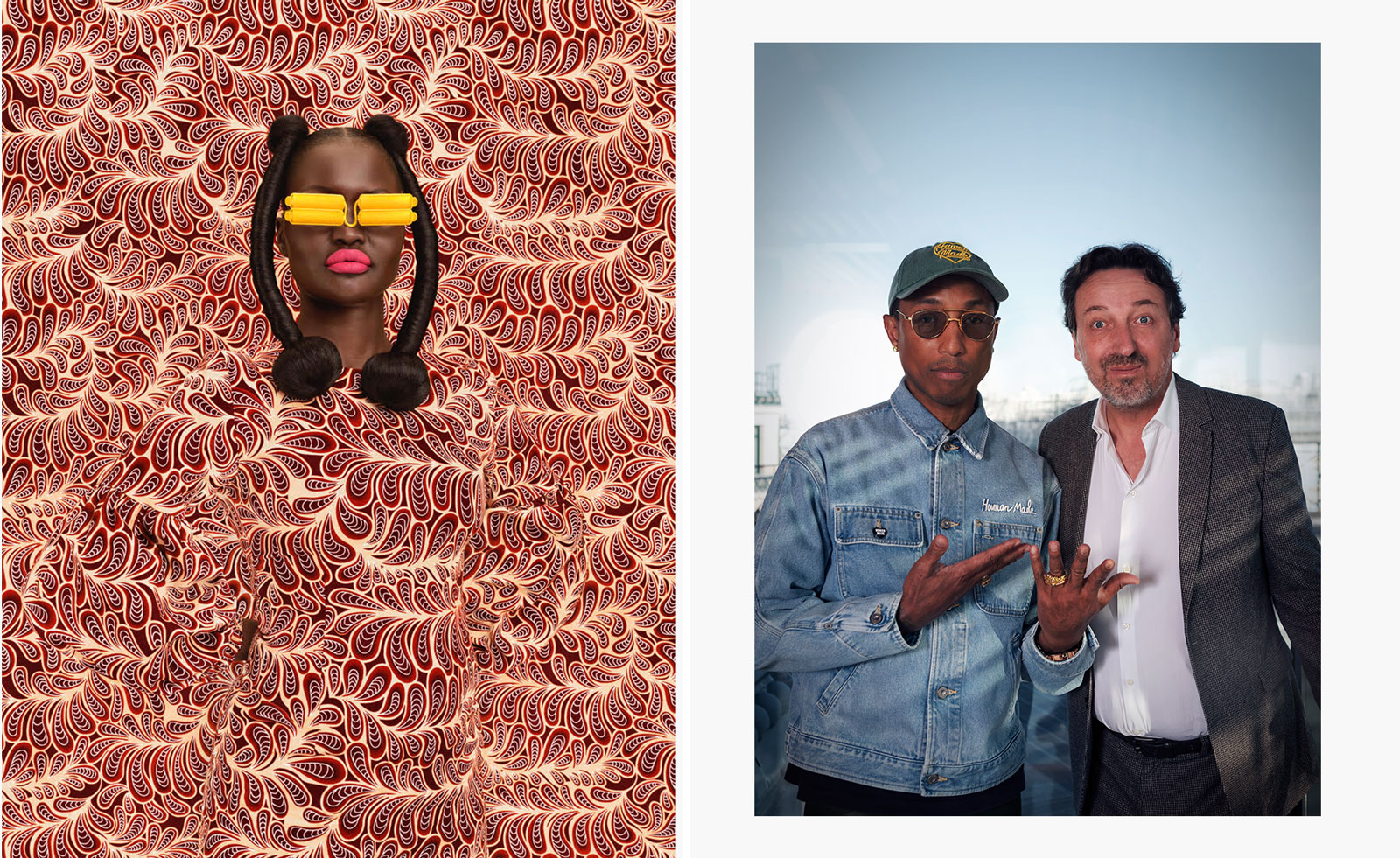 ‘The Black woman endures a gravity unlike any other’: Pharrell Williams explores diverse interpretations of femininity in Paris
‘The Black woman endures a gravity unlike any other’: Pharrell Williams explores diverse interpretations of femininity in ParisPharrell Williams returns to Perrotin gallery in Paris with a new group show which serves as an homage to Black women
By Amy Serafin
-
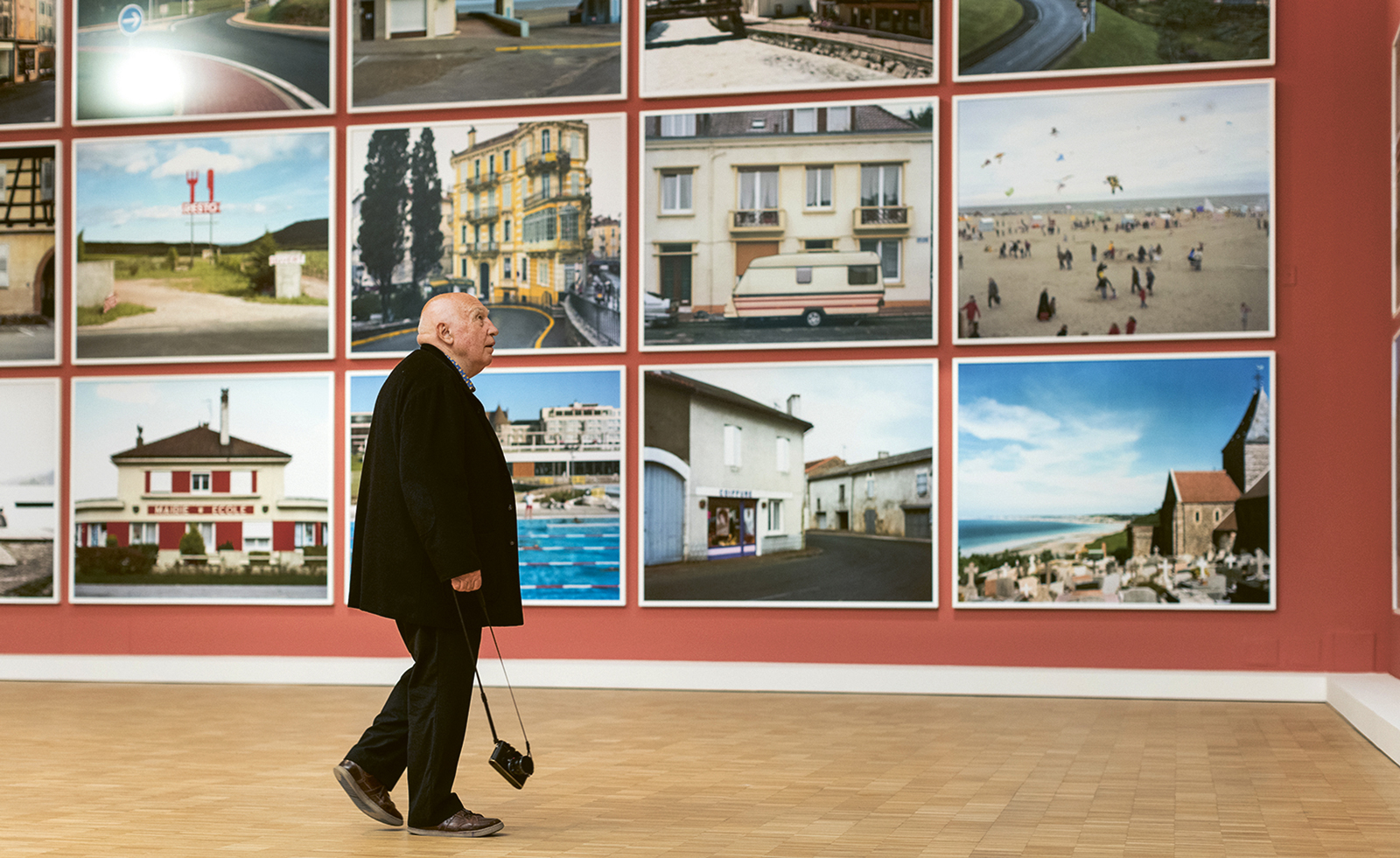 What makes fashion and art such good bedfellows?
What makes fashion and art such good bedfellows?There has always been a symbiosis between fashion and the art world. Here, we look at what makes the relationship such a successful one
By Amah-Rose Abrams
-
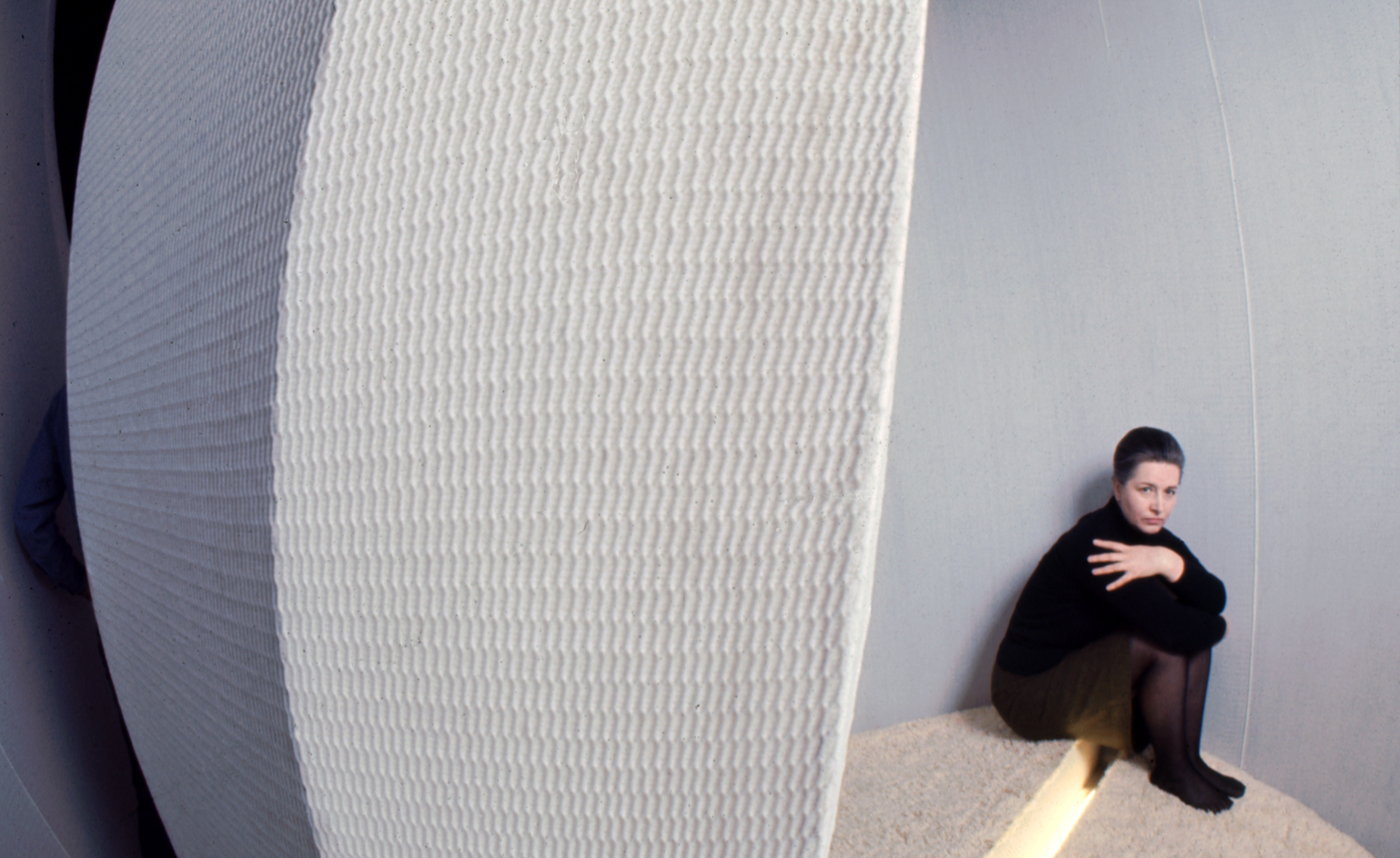 Architecture, sculpture and materials: female Lithuanian artists are celebrated in Nîmes
Architecture, sculpture and materials: female Lithuanian artists are celebrated in NîmesThe Carré d'Art in Nîmes, France, spotlights the work of Aleksandra Kasuba and Marija Olšauskaitė, as part of a nationwide celebration of Lithuanian culture
By Will Jennings
-
 Inside Jack Whitten’s contribution to American contemporary art
Inside Jack Whitten’s contribution to American contemporary artAs Jack Whitten exhibition ‘Speedchaser’ opens at Hauser & Wirth, London, and before a major retrospective at MoMA opens next year, we explore the American artist's impact
By Finn Blythe
-
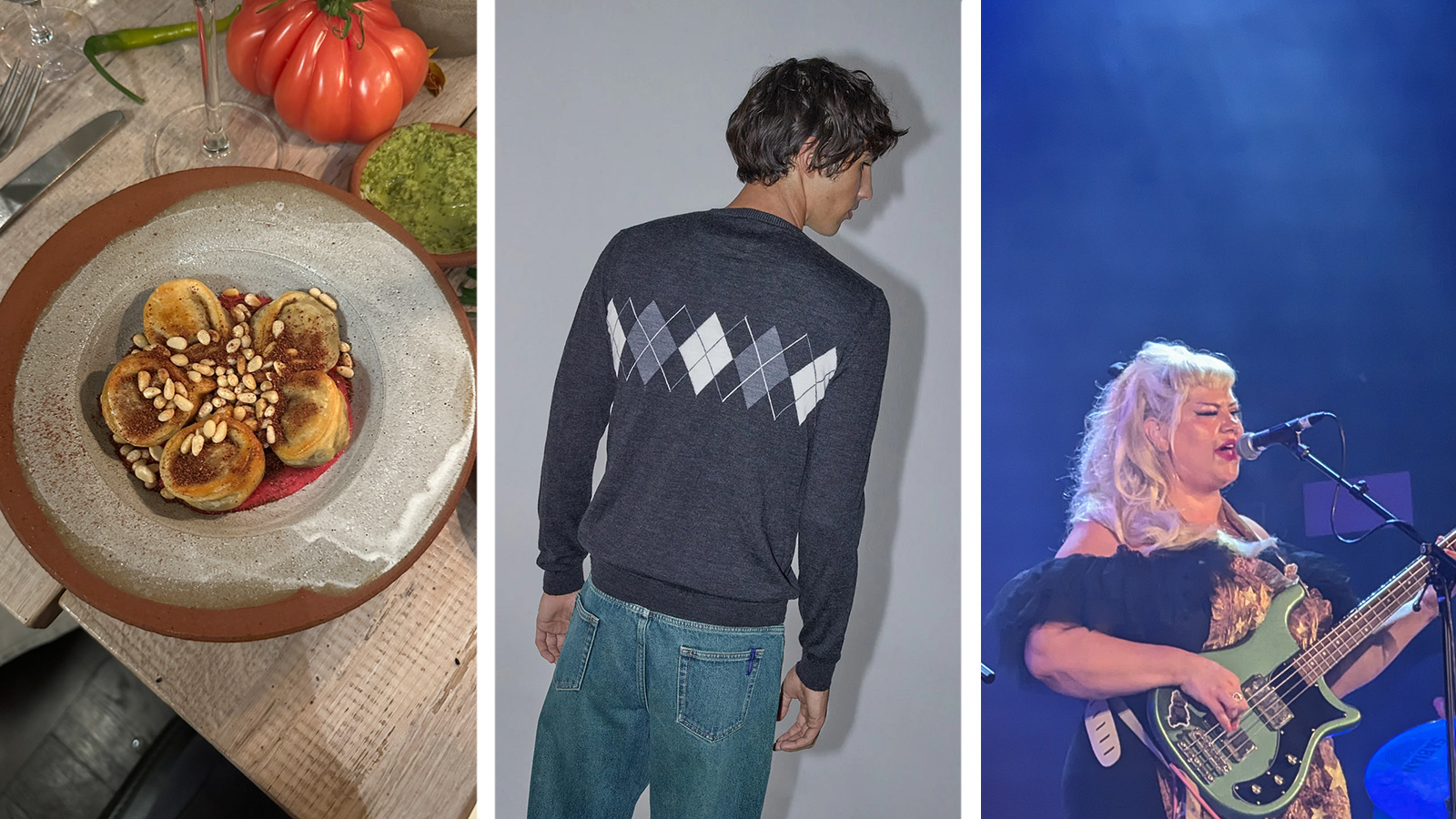 Out of office: what the Wallpaper* editors have been doing this week
Out of office: what the Wallpaper* editors have been doing this weekInvesting in quality knitwear, scouting a very special pair of earrings and dining with strangers are just some of the things keeping the Wallpaper* team occupied this week
By Bill Prince